Unit 1: Global Prehistory
1/32
Earn XP
Description and Tags
hihi
Name | Mastery | Learn | Test | Matching | Spaced |
|---|
No study sessions yet.
33 Terms
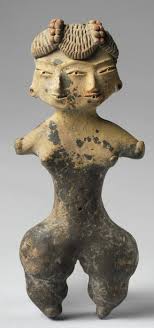
identifier
Tlatilco Female Figure
Central Mexico, Site of Tlatilco
Ceramic

Identifier
Running Horned Woman
Tassili n’ Ajjer, Algeria
Pigment on Rock

identifier
Beaker with ibex motifs
Susa, Iran
Painted Terra Cotta
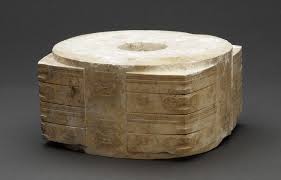
identifier
Jade Cong
Liangzhu, China
Carved Jade

identifier
Anthropomorphic Stele
Arabian Peninsula
Sandstone
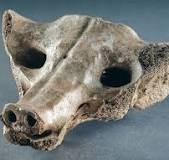
identifier
Camelid Sacrum in the shape of a canine
Tequixquiac, Mexico
Bone
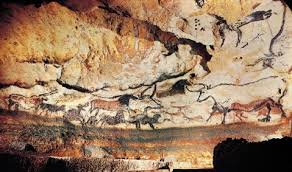
identifier
Great Hall of the Bulls
Lascaux, France
Rock Painting

identifier
Apollo 11 Stone
Nambia
charcoal on stone

identifier
:Lapita
Terra cotta fragments
Reef Island, Solomon Island
Terra Cotta (incised)

identifier
The Ambum Stone
Ambum Valley, Enga Province, New Papua Guniea
Greywacke
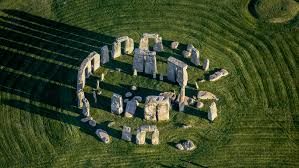
identifier
Stonehenge
Wiltshire, UK
Sandstone
Visual Analysis
FORM:
rock painting; charcoal on a stone broken into 2 pieces
hand-sized
image in profile = from the side view; parts are clearly recognizable
CONTENT:
animal with feline body, oryx horns, human hind legs & bovid genitals

Contextual Analysis
CONTEXT:
earliest known figural rock paintings in Africa (25,500–25,300 bce)
excavated from the floor of a rock shelter in the Huns Mountains
culture of hunters and gatherers; ancestors of Khoi (San)
the Apollo 11 site was an ongoing settlement:
over 100,000 years of human occupation
included many cave paintings of animals
animal engravings along the river
ostrich eggshell fragments with red color found in hearths
excavated in 1969; the archaeologist named the site after the recent lunar landing
FUNCTION:
an example of portable art
site had ritual significance over a long period of time
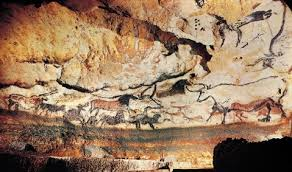
Visual Analysis
FORM:
created using mineral pigments
overlapping and often repeating forms
superimposed forms
strong outlines (contour lines)
animals in profile to show their distinct feature
CONTENT:
naturalistic animals with a sense of vitality and movement
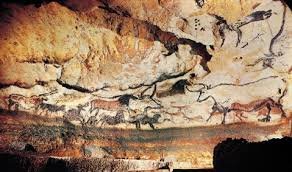
Contextual Analysis
CONTEXT:
the location of the paintings in secluded chambers far from the main entrance, suggest that the caves were used for rituals
different artists’ depictions created over a long time
FUNCTION:
to document animal-based rituals
to depict connection to spiritual realms
Painting, itself, as a spiritual/ritualistic act
could indicate some type of “hunting magic”
Visual Analysis
FORM:
basic form was likely determined by the natural shape of the animal bone
made from the fossilized remains of the sacrum of a now extinct camelid
bone is engraved
CONTENT:
head of a dog-like animal
holes were cut into the end of the bone to represent nostrils
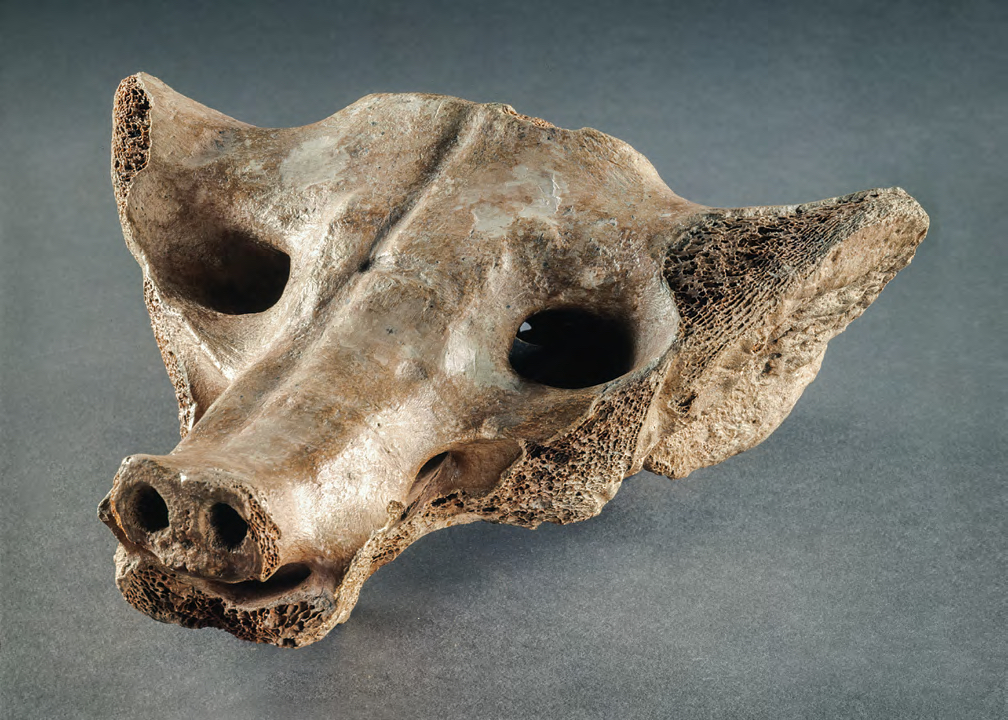
Contextual Analysis
CONTEXT:
considered among the earliest pieces of art from the American continent
discovered in 1870 in Tequixquiac, Mexico—in the Valley of Mexico (where Mexico City is located)
lack of information from the find spot makes precise dating very difficult
FUNCTION:
perhaps the sacrum bone was considered sacred as it is located near the reproductive organs
Visual
Visual Analysis
FORM:
created with mineral pigments
diagonal lines suggest movement, add dynamism
composite pose: multiple views of the figure are presented in a single representation
torso and legs in profile
shoulders, arms, and horns are frontal
also called twisted perspective
CONTENT:
diagonal limbs make her appear to move
ceremonial dress
dancewear; armlets, garters and tassels
dots represent physical ornamentation (body art)

Contextual Analysis
CONTEXT:
Tassili n’Ajjer is a difficult to access plateau in the Algerian section of the Sahara Desert
FUNCTION:
the site elevation and topology suggests ritual, rite, or ceremony
Visual Analysis
FORM:
made from terra cotta
composed of simple geometric elements and patterns
distinctive brown on cream color palette
CONTENT:
stylized animals: birds, hunting dogs and a large centrally placed representation of an ibex, a kind of mountain goat
represent both the wild and the domesticated animals of an agricultural society
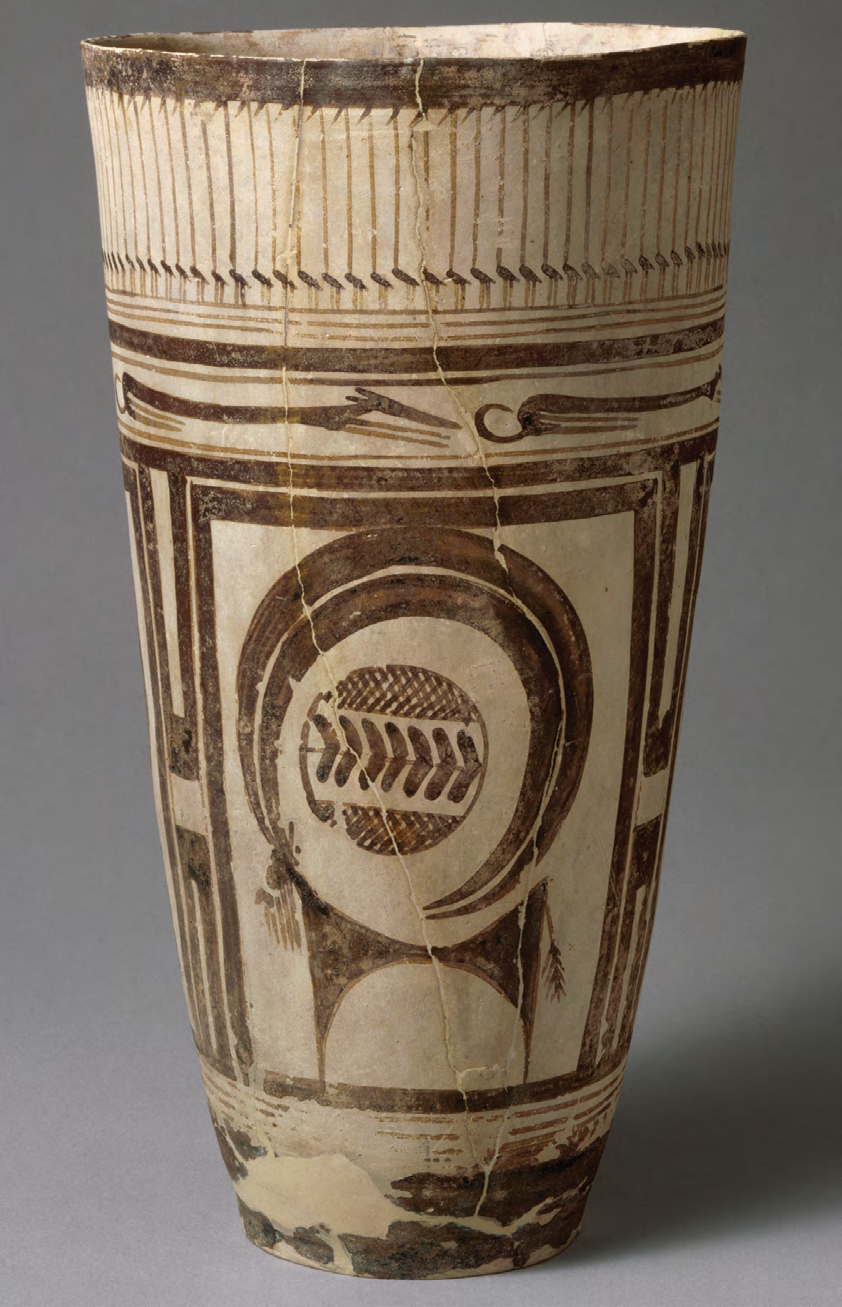
Contextual Analysis
CONTEXT:
was buried in a cemetery, underneath an artificial mound
found by archeologists while excavating a necropolis (cemetery)
FUNCTION:
most likely used in a funerary, ritual context
Visual Analysis
FORM:
stele: vertical stone monument inscribed with text or relief carving
highly stylized
minimalist, yet expressive
CONTENT:
Extremely simplified face and limbless body
necklace
two cords crossing the body with an awl (a small pointed tool) attached
double-bladed daggerhangs from a wide belt that continues around to the back
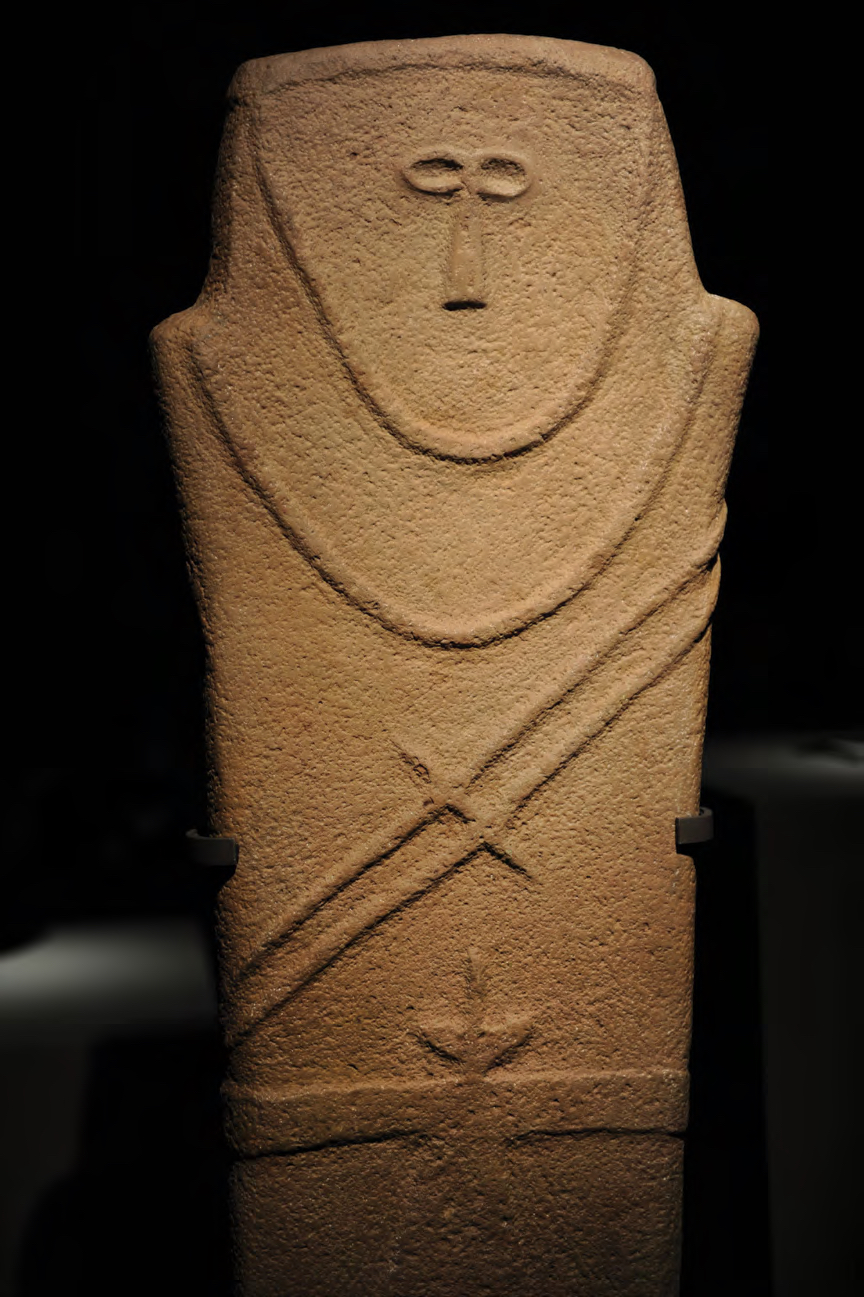
Contextual Analysis
CONTEXT:
many similar stelae have be found all over the Arabian peninsula
early caravan trails connected these far away sites
objects like these were circulated and exchanged along these early routes
FUNCTION:
was likely used as a grave marker in an open-air sanctuary
Visual Analysis
FORM:
jade, tube-like objects
combines rectangular and round forms
made by rubbing with a hard, abrasive sand (jade is too hard to simply carve)
interlocking square and cylindrical forms
CONTENT:
surface that is ornamented with:
geometric motifs
stylized faces or masks
faces could represent spirits or deities
rectangular form could symbolize Earth
circular form could symbolize Heaven or Sky
rectangle and circle together represents the connection between the physical and spiritual worlds
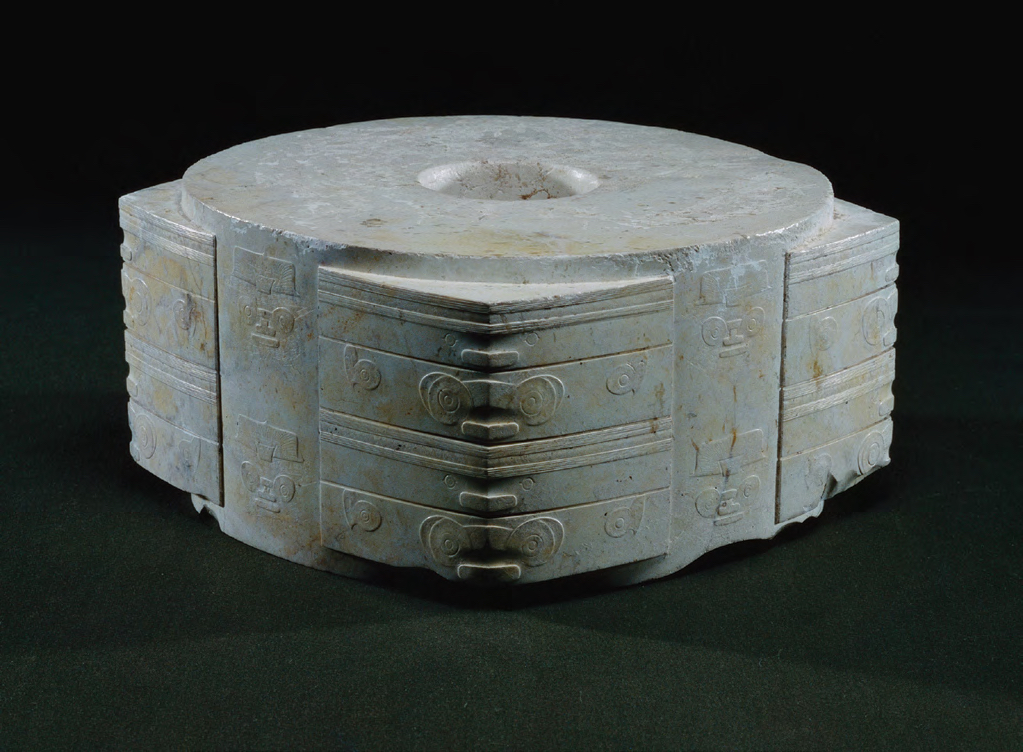
Contextual Analysis
CONTEXT:
produced by the Liangzhu culture
required much time and labor to produce
FUNCTION:
served as grave goods, part of funerary traditions
Visual Analysis
FORM:
henge: a prehistoric circle of stones or wooden uprights
trilithon: two large vertical stones (2 posts) supporting a third stone set horizontally across the top (1 lintel)
post-and-lintel construction
mortise-and-tenon joints
circular ditch was made in the first phase of construction
CONTENT:
a “heel stone” marks the point of sunrise at the summer solstice
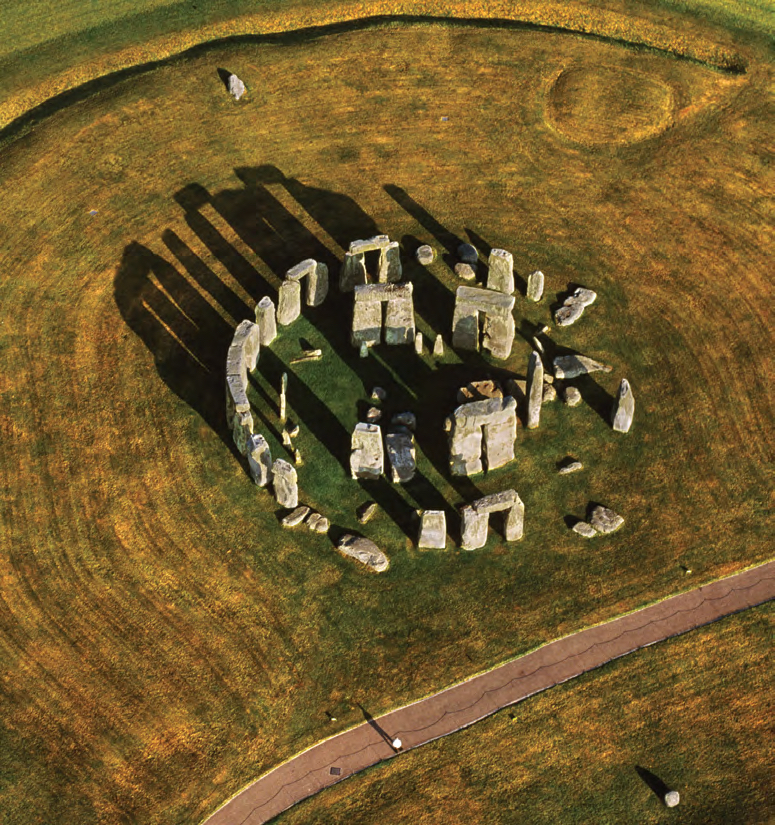
Contextual Analysis
CONTEXT:
created by a society of early farmers who lived in nearby settlements
constructed in multiple phases over several hundred years
bluestones were transported from Wales = ancestral connection
human remains show signs of sickness and/or trauma
animals were brought long distances here before they were eaten
FUNCTION:
may have acted as a center for pilgrimage and healing of the sick
may have been a calendar
Visual Analysis
FORM:
sand was mixed with clay to make the vessels more durable for firing
red slip (liquid clay) applied to the surface of a still unfired pot
incised or stamped (dentate stamping = tooth-like impressions)
CONTENT:
typical Lapita motifs:
human faces
dancing figures
geometric patterns

Contextual Analysis
CONTEXT:
Made by the Lapita people
fragments have been found across vast regions of Pacific islands
FUNCTION:
fragment sites trace patterns of ocean migration of Lapita people
Visual Analysis
FORM:
head and upper body of an animal, conforming to the shape of a handle
slightly shiny patina on some of its raised details suggest it has been well handled
CONTENT:
perhaps represented a totemic animal
possibly depicts an echidna, an egg-laying mammal related to the platypus
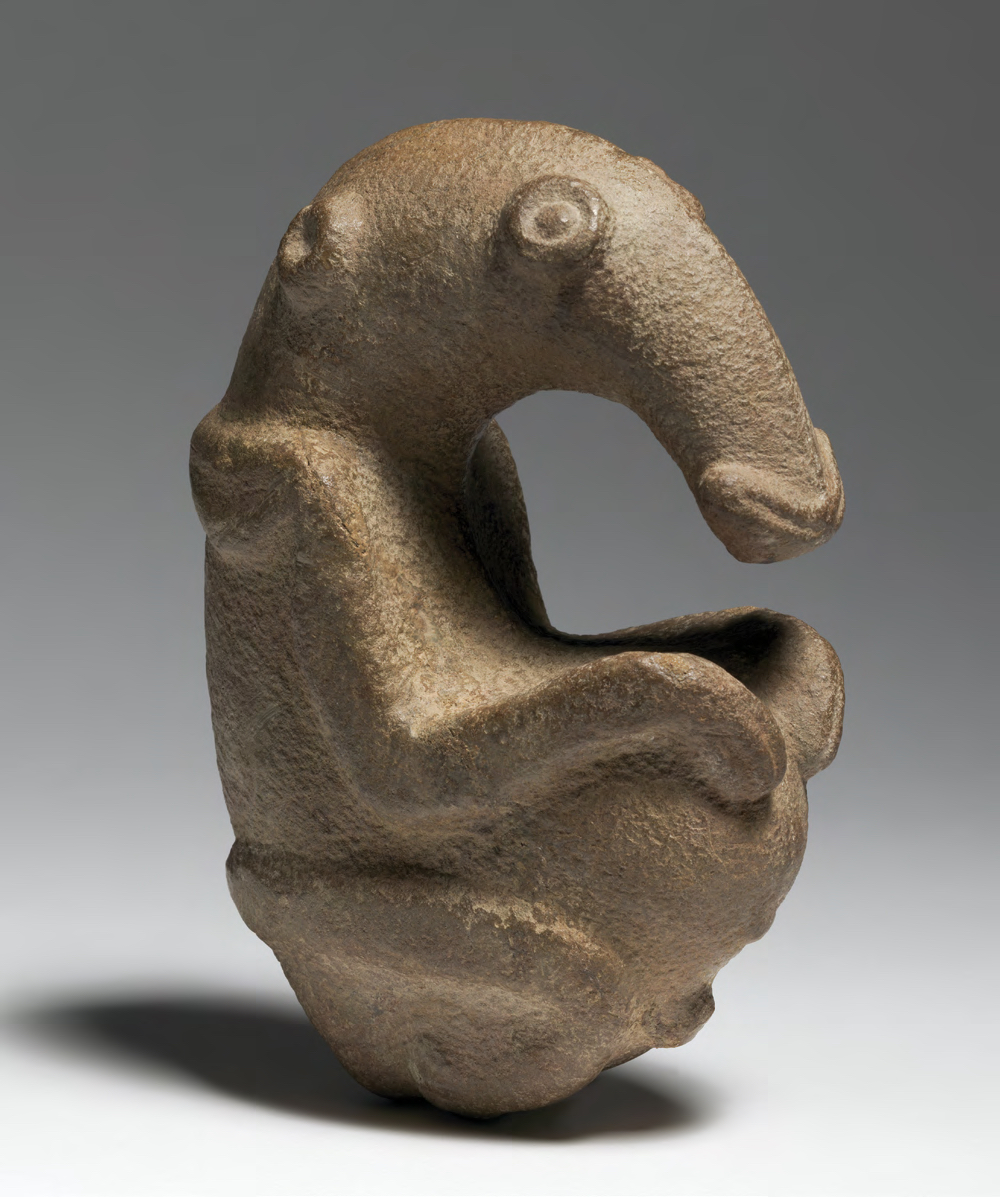
Contextual Analysis
CONTEXT:
from Neolithic Papua New Guinea
these people made many mortars and pestles
FUNCTION:
pestle: a tool used to grind or pound substances
Visual Analysis
FORM:
small ceramic figurine (fits in hand)
highly stylized
exaggerated proportions
lack of attention to the hands and feet
truncated arms
wide, expansive hips
slim, pinched waist
displays the marks of hand-formed and pinched clay
incising: details cut into the surface with a sharp tool (hair & face)
CONTENT:
bicephalic (two-headed) figure
elaborate hairstyle

Contextual Analysis
CONTEXT:
buried as a grave offering alongside the dead
buried with a large quantity of other objects
Modern Mexico City sits on top of the remains of the village
FUNCTION:
found in burial contexts, function is likely funerary
most likely functioned as an effigy (a sculpture or model of a person) or an offering